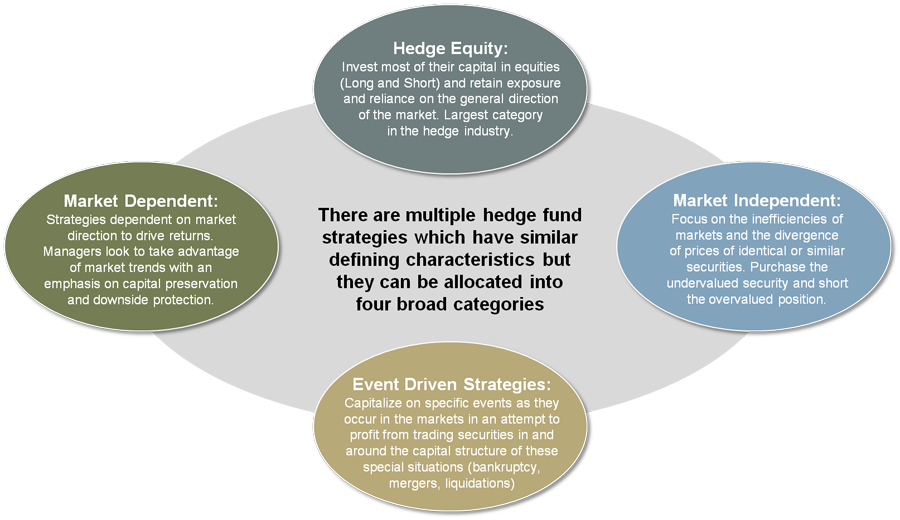Hedge Fund Strategies
Post on: 12 Июнь, 2015 No Comment

This strategy seeks to profit from the pricing of the embedded option in a convertible bond. Often used is a long, convertible position with a corresponding short position in the underlying stock. Varying degrees of leveraged are employed with this strategy.
Distressed Securities
This strategy invests in illiquid debt and/or equity of firms in or near bankruptcy in order to profit from a potential recovery. Generally, no leverage is used.
Emerging Markets
Investment in securities by businesses and/or countries with developing economies is used in this strategy. Some emerging market countries include Brazil, China, India, and Russia. The major emerging market areas are Latin America, Eastern Europe, Asia, and the Pacific Rim. Various asset classes with different strategies are used.
Market Neutral
Market neutral strategies used are primarily arbitrage or hedging. Both strategies aim at returns with low or no correlation to stocks.
Arbitrage may be divided into merger arbitrage, relative value arbitrage, convertible arbitrage, fixed income arbitrage, and capital structure arbitrage. Arbitrage strategies attempt to take advantage of price discrepancies between paired securities.
Hedging involves investing in securities, both long and short, with the goal of low net market exposure. Long positions that are undervalued and short positions that are overvalued are selected. In theory, this mitigates market volatility.
Market Timing
Market timing strategies switch among various asset classes to time price movements in different markets. Stocks, bonds, mutual funds, and money market funds are some of the asset classes used.
Futures
Futures are financial contracts for buying or selling a financial or physical commodity (e.g. currencies, stock indexes, heating oil) at a future date. Long and short futures contracts can act to hedge aspects of many fund portfolios. High levels of leverage are often involved in futures.
Equity
Hedge Long/Short Long and short equity securities positions are taken in this strategy. The overall portfolio may have either a long or a short bias. Equity hedge long/short relies on superior stock selection. Typically, a low degree of leverage is used. This strategy is one of the most popular in terms of the number of hedge funds and amount of money under management.
Event Driven
This strategy aims to profit from price imbalances resulting from a specific event or transaction — for example, merger, hostile takeover, or leveraged buyout.
Global Macro

An opportunistic, top-down approach is implemented by managers using this macroeconomic strategy. Trades are based upon major changes in the global economy, including interest rates and currencies, as well as changes in the economic policies of specific countries. Macro strategies use moderate amounts of leverage.
Fund of Funds
The fund invests in other hedge funds rather than directly in stocks, bonds, or other securities. Hedge funds utilized may be of similar strategies, such as equity hedge long/short; or the hedge funds employed may have different strategies. Generally, funds of funds are less volatile than single manager funds.
Sources:
Barclay Trading Group, Ltd.
Hedge Fund Research, Inc.
BARRA RogersCasey
Capital Management Partners, Inc.
1100 North Fourth Street














